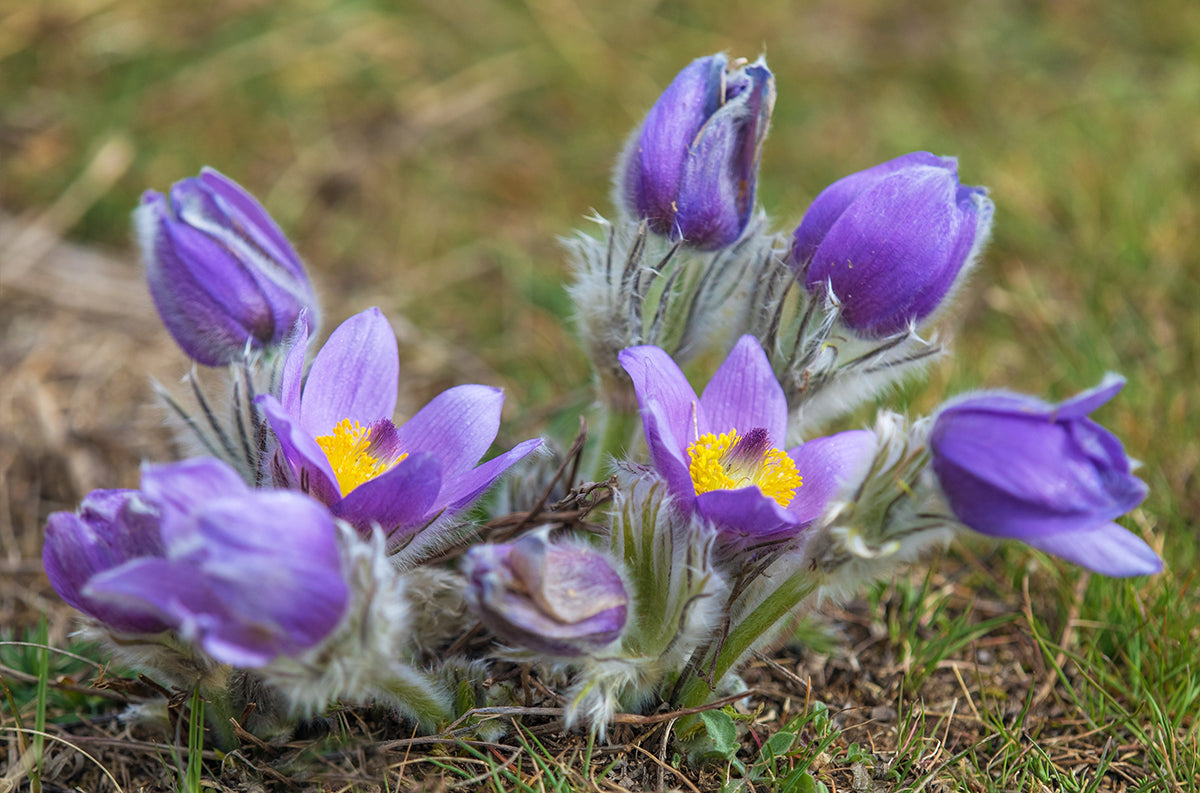Plant profile - pasqueflower

We’re always excited when April arrives because one of our favourite plants, Pulsatilla vulgaris, will be in flower this month. Commonly known as the pasqueflower, they are small low growing perennials belonging to the buttercup family (Ranunculaceae). They can be found growing naturally on calcareous grasslands across Europe, but are also a popular garden plant. They are one of the earliest flowering herbaceous perennials and have underground rhizomes that serve as food-storage organs for the plant.
Its popularity as a garden plant is due to its soft, silver-grey hairy stems and leaves appearing in rosettes, while its bell-shaped, purple flowers have wonderful contrasting golden anthers. These flowers are followed by distinct, silky seed-heads, which can remain on the plant for months, adding further to its horticultural appeal.
Although only 15–30 cm (6–12 inches) high, the plant’s roots can grow as deep as one metre allowing it to thrive in poor soil conditions.
Despite its availability as a garden plant the pasqueflower is considered vulnerable in Britain, where it appears on the Red Data List. It is also classified as a Priority Species in the UK Biodiversity Action Plan.
We’re very lucky to have a large colony near us in Gloucestershire. Set into the side of a deep valley the plants survive on very thin Cotswold limestone brash, but it’s these very conditions that are responsible for the plants success. The poor soils make it hard for other plants to compete so that the Pulsatilla aren’t swamped and overshadowed by tall growing competitive grasses.
As a garden plant they actually cope very well with richer soils, in fact they often thrive, it’s just competition from neighbouring plants that needs to be carefully managed. This can be achieved by using companions of a similar stature or well spaced within a rockery type situation.







